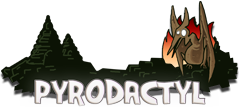First, a message from our artist:
I’m Mikk, the artist of Unrest. I’ll be telling you about how I drew Unrest.
We started work on the new set of art in the middle of the Kickstarter, when we hit that stretch goal for new art. The idea was to create a new unique hand painted aesthetic style, and that comes with its own set of problems. I could’ve hand drawn each level in its entirety, but there’s a reason almost nobody does that. We wanted quite a large world with about 5 distinct regions, both inside and outside Bhimra. If each region had about 5 levels, that is a lot to draw. It could work with a huge team of artists and the resources to pay them, but we didn’t have that. The other problem is that all the levels would be giant images taking a lot of space on your hard drive and video memory, along with the animated sprites and other misc. graphics. Even now, about half of our level files are 4000×3000 pixels or larger.
Here’s a small snip of one tileset we use:

An example tileset
So the question was – how do I make a large vibrant hand-drawn world without going way over budget in time, finances and file size?
The usual answer is tile based graphics. (If you don’t know what these are, think Super Mario and Zelda game graphics of old. Levels were built out of a relatively small number of different blocks). Tiles don’t take anywhere as long to draw as hand drawing whole levels, because you get to reuse most resources. They also fix the file size problem. The drawback is their rigidity – they’d need an extreme amount of work to reach that flowing hand painted aesthetic. Conventional tile based games can look absolutely beautiful, but they always retain a backdrop grid.

Step 1: This is how a backdrop grid looks in Unrest.
My solution was to use tiles to save on drawing time and file sizes, but to throw convention out the window. Tile based graphics have a long history, and for most of this history video card memory has been very limited. Therefore, tilesets have traditionally been small (usually 16×16 to 64×64 pixels and about 200-300 tiles per environment) and you’d only use a few layers of these. There’s not enough memory to make fully hand drawn levels practical, but there definitely is enough video RAM to use more tiles. So that’s what I did. I drew a lot of tiles. And I do mean a lot.
I also went against the usual convention of having all your tiles the same size and same orientation. I’ve set a “base tile size” of 32×32, everything I draw should neatly by divisible by that. But a lot of the pieces are actually much bigger, up to 1024×1024 pixel pieces (some of the houses and other major unique bits). There is a base traditional grid for the backdrop layers, but everything else is much more freeform and loosely set orientation wise as well. Another tool which wasn’t available for most of tiled graphics history is using alpha. Adding an alpha channel to images means you can have partially transparent graphics. Adding this to tiles means you can control how these images flow into each other when they’re layered on top of one another.
Combining this all together means that (given enough layers of these new tiles, up to 30 in Unrest levels) I can almost completely erase any repetition, rigidity and any other hints that I’ve used tiles. Solving all my problems of how to keep to that flowing water color like hand painted style, but making the project manageable.

Step 2: Around 3-5 layers of adding the giant house tile blocks in various orientations.
This new style of tiles can be combined with more traditional isometric tiles if needed for certain scenery, as shown here:

Step 3: More detailing, as freeform and “seemingly random” as possible to make it seem lifelike and like an actual slum. This is made an extreme amount easier with all the little bits of grass/rock being half transparent and having smooth edges which use alpha to blend them into the background.
To build the actual level design I use the awesome free tile map editor called Tiled.
To other artists working on similar projects, I’d say try not to be limited by convention! It’s always possible to come up with new interesting solutions to graphics and aesthetic problems. I think you can do this on a project of any scale. Try new things and push the envelope, if not on a global scale, then at least your own style wise.
Arvind with a message about Steam keys:
Remember that time when we told you that we would give you Steam keys?
Well, you can now redeem your Unrest Steam keys via Humble Bundle! Note that the game will unlock only on the release date, but otherwise, you’re good to go.
NOTE: There was a minor snafu by Humble which resulted in duplicate keys, and as a result some of you may have got scary messages on Steam when we fixed the problem. The aforementioned scary messages were not written by us, and we do not agree with their contents. I believe Valve misjudged the situation slightly, but I apologize for any trouble the messages have caused.
Please feel free to PM me via Kickstarter, or email me at arvind@pyrodactyl.com if there’s a problem.






